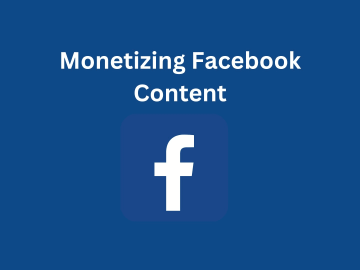In your search for a project management tool, you’ll likely come across Wrike — a highly rated platform used by over 20,000 organizations. But is it the best solution for your business?
This guide provides an overview of Wrike’s pricing and features and compares it to similar tools. It will help you determine whether this solution is ideal for meeting your budget and unique needs.
Paid plan price (monthly)
Starts at $10/user
On ClickUp’s website
Paid plan price (monthly)
Starts at $12/user

On monday.com’s website
What is Wrike?
Wrike is a cloud-based project management software for project managers, product teams, marketers and professional service providers.
It streamlines projects by helping you manage them in one place. By allowing you to add comments and mentions, attach files and share your projects, Wrike facilitates collaboration between team members and external collaborators.
To boot, Wrike offers different views — Kanban board, Gantt chart, table view, calendar view, etc. — supporting 360-degree visibility to help you stay on top of your projects. It also makes reporting easy with its ready-made and custom dashboards as well as shareable reports.
Lastly, to improve individual and team productivity, Wrike lets you automate repetitive work such as reminders, task assignments and approvals. Its AI features, including voice delegation and content creation and editing, further boost productivity.
Wrike pricing and plans
Wrike offers a free plan and four paid plans to meet different users’ needs.
Two of the paid plans (Team and Business) are suitable for small businesses, while the other two (Enterprise and Pinnacle) are ideal for larger teams with complex workflows. Although we’ve included Enterprise and Pinnacle plans here for the purposes of comparison, we haven’t gone into much detail since most small businesses will find them out of their budget.
Keep in mind, all plans offer:
- Android and iOS mobile apps
- Multilanguage support in eight languages
- Support for Windows and Mac operating systems
- Task and subtask management features alongside use case project templates
Major plan differences lie in the number of users and automations, storage, supported views and level of customization, among other features.
Free plan
Ideal for new small-business owners, Wrike’s free plan offers essential project management features, including:
- Spaces to organize account structure (by team, client, etc.)
- Folders, projects, tasks and subtasks to organize and plan projects
- Mass actions to make changes to several tasks at the same time
You can also invite 20 collaborators to work with you and create up to 200 tasks and subtasks. The plan gets you started but limits you in terms of the customization it offers. For instance, there are limited views and no custom workflow and automation features. You can also only use Smart Search with all other useful AI features reserved for premium plans.
Team plan
Priced at $9.80 per user per month (billed annually), the Team plan is suitable for businesses with small teams (2-25 members) looking to leverage customizations, automated workflows and AI to boost efficiency.
The plan doesn’t put a limit on the number of tasks you can create. It also offers helpful features like:
- Custom workflows, fields and dashboards
- All essential AI features including voice delegation and generative AI
You also aren’t limited to Kanban and table views only — you can review projects and progress as Gantt charts or see things in calendar view. There’s also a personal schedules feature that allows colleagues to create shareable personal schedules showing team members the days they’re off or on vacation.
One of the few essential features missing from this plan is Wrike’s report builder.
Business plan
The Business plan, available for $24.80 per user per month (billed annually), is suitable for small businesses with growing teams. Professional service providers and agencies can also make the most of it thanks to its guest approval and resource management features (centralized view, effort allocation tool, time tracking, etc.).
The plan also provides team productivity-boosting features such as:
- File proofing and approval
- Extension to Adobe Creative Cloud and digital asset management (DAM) integration
Native Salesforce integration and (premium) QuickBooks integrations are available too. What’s more, you can brand your workspace and create custom templates, custom approval workflows and custom project approvals with this plan.
Add-ons and extra fees
Although Wrike’s pricing plans are pretty encompassing in meeting different business owners’ needs, it does offer some premium add-ons (all pricing requires contacting the company):
- Write Support. Paid Wrike plans include standard support on weekdays with a 24-hour response time. This add-on, best for businesses that need speedy and extensive customer support, gives paid Wrike users access to 24/7 customer support with an hour-long response time.
- Wrike Lock. Wrike plans already offer enterprise-grade security, but this add-on (available for Enterprise and Pinnacle plans only) allows you to take more control by managing your own encryption keys. You monitor data decryption requests and approve or deny them.
- Wrike Sync. Available for the Business plan and higher, this add-on connects 22 different platforms to Wrike — including Microsoft and Google tools, Airtable, Salesforce, Jira, Zendesk and more — automatically transferring data between your app ecosystem.
- Wrike Integrate. Also only available for the Business plan and higher, this premium add-on allows you to use Wrike’s no-code, drag-and-drop functionality to add custom automations. It also gives you more customization options with your integrations — letting you connect any combination of apps.
Besides these add-ons, there are no other additional fees except for charges for collaborator invites. Essentially, Wrike gives you 20 collaborator invites or 15% of your license count (whichever is greater). If you need to invite more people, you’ll have to speak to the Wrike team about it.
Free trial
In addition to its free plan, Wrike offers a two-week, full-feature trial for its paid plans. Once the free trial account expires, your account will be blocked until you decide to downgrade to the free version or talk to Wrike’s team to upgrade.
Wrike pricing vs. competitors
Here’s a quick look at how Wrike compares to similar tools:
Some comparisons to note: Wrike limits the number of tasks and subtasks in its free plan, but Asana offers unlimited projects and tasks in its free plan. Similarly, Wrike limits you to 20 collaborators, but Asana lets you collaborate with unlimited free guests in its Starter plan, which costs almost the same as Wrike’s Team plan.
Likewise, ClickUp offers unlimited storage, integrations, dashboards and custom fields, as well as resource management features in its Unlimited (starter) plan for significantly less than Wrike’s Team plan.
Summary: Is Wrike worth the cost?
Wrike’s Team plan is a good option for small businesses with growing teams looking to streamline their operations with custom workflows, automation and advanced AI features. Beyond that, the project management tool can get expensive compared to other leading solutions that offer more features for less.
Paid plan price (monthly)
Starts at $10/user

On ClickUp’s website
Paid plan price (monthly)
Starts at $12/user

On monday.com’s website
Frequently asked questions (FAQs)
How much does Wrike cost?
Wrike’s starter Team plan costs $9.80 per user per month, and its Business plan costs $24.80 per user per month. A free plan is also available.
Does Wrike have a free plan?
Yes, Wrike offers a free plan that provides essential project management features, including the ability to create 200 tasks and subtasks and share with 20 collaborators. However, the free plan doesn’t include customization, workflow automation or AI features.
Related: Best free project management software in 2024
Is Wrike free for personal use?
You can use Wrike’s free plan for personal use. It lets you create up to 200 tasks and subtasks and add 20 friends or family members as collaborators.
Is Wrike worth it?
Wrike is worth the advanced AI features it offers. Beyond that, it gets expensive as it offers fewer features and limits the number of collaborators and automations compared to competing tools. Its free plan also lets you add limited tasks and subtasks; however, other project management software gives you unlimited tasks.
What is Wrike best used for?
Wrike is ideal for organizing, managing and collaborating on multiple projects and campaigns with your team and external stakeholders. It offers extensive customization, automation and productivity-boosting AI features, making it great for streamlining workflows.




